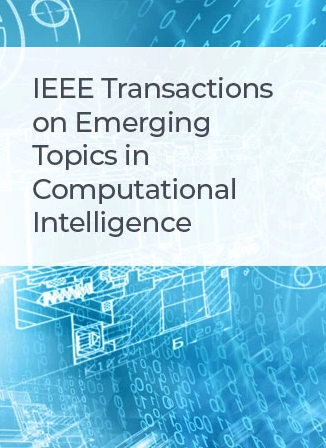Towards Precise Weakly Supervised Object Detection via Interactive Contrastive Learning of Context Information
IF 5.3
3区 计算机科学
Q1 COMPUTER SCIENCE, ARTIFICIAL INTELLIGENCE
IEEE Transactions on Emerging Topics in Computational Intelligence
Pub Date : 2024-09-13
DOI:10.1109/TETCI.2024.3436853
引用次数: 0
Abstract
Weakly supervised object detection (WSOD) aims at learning precise object detectors with only image-level tags. In spite of intensive research on deep learning (DL) approaches over the past few years, there is still a significant performance gap between WSOD and fully supervised object detection. Existing WSOD methods only consider the visual appearance of each region proposal but ignore the useful context information in the image. This paper proposes an interactive end-to-end WSDO framework called JLWSOD with two innovations: i) two types of WSOD-specific context information (i.e.,基于上下文信息交互对比学习的精确弱监督目标检测
弱监督目标检测(WSOD)旨在仅使用图像级标签学习精确的目标检测器。尽管在过去的几年里深度学习(DL)方法得到了大量的研究,但WSOD和完全监督目标检测之间仍然存在很大的性能差距。现有的WSOD方法只考虑每个区域建议的视觉外观,而忽略了图像中有用的上下文信息。本文提出了一个名为JLWSOD的交互式端到端WSDO框架,其创新之处有两点:1)在WSOD框架中提出并引入了两种特定于WSOD的上下文信息(即实例相关和语义相关);ii)设计交互式图形对比学习(iGCL)机制,共同优化视觉外观和上下文信息,提高WSOD性能。具体来说,iGCL机制充分利用了WSOD的互补解释,即基于实例的检测和基于语义的预测任务,形成了更全面的解决方案。在广泛使用的PASCAL VOC和MS COCO基准上进行的大量实验验证了JLWSOD优于替代SOTA和基线模型(mAP和CorLoc分别提高了3.0%和3.1%)。
本文章由计算机程序翻译,如有差异,请以英文原文为准。
求助全文
约1分钟内获得全文
求助全文
来源期刊

IEEE Transactions on Emerging Topics in Computational Intelligence
Mathematics-Control and Optimization
CiteScore
10.30
自引率
7.50%
发文量
147
期刊介绍:
The IEEE Transactions on Emerging Topics in Computational Intelligence (TETCI) publishes original articles on emerging aspects of computational intelligence, including theory, applications, and surveys.
TETCI is an electronics only publication. TETCI publishes six issues per year.
Authors are encouraged to submit manuscripts in any emerging topic in computational intelligence, especially nature-inspired computing topics not covered by other IEEE Computational Intelligence Society journals. A few such illustrative examples are glial cell networks, computational neuroscience, Brain Computer Interface, ambient intelligence, non-fuzzy computing with words, artificial life, cultural learning, artificial endocrine networks, social reasoning, artificial hormone networks, computational intelligence for the IoT and Smart-X technologies.
 求助内容:
求助内容: 应助结果提醒方式:
应助结果提醒方式:


